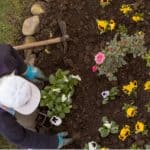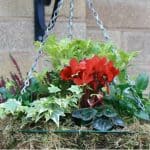Last updated on March 28th, 2022
Our site is reader supported, this means we may earn a small commission from Amazon and other affiliates when you buy through links on our site.
Pumpkins are a wonderful thing to grow if you have kids or grandkids coming around regularly. They are quite easy to cultivate, as long as you have a large patch of land, shelter from cold winds, and access to the sun. The sight of a colourful pumpkin come autumn will be well worth the investment and you can even use it in cooking so nothing should be wasted, even the seeds can be made into necklaces for kids.
Sowing Pumpkins
Sow seeds indoors in April and outdoors at the end of May
Pumpkins are best cultivated from seed indoors. You can sow seeds on their side 1cm deep in compost during the month of April. If you want seedlings but don’t have space, many garden centres will sell them in small 9cm pots ready to grow on.
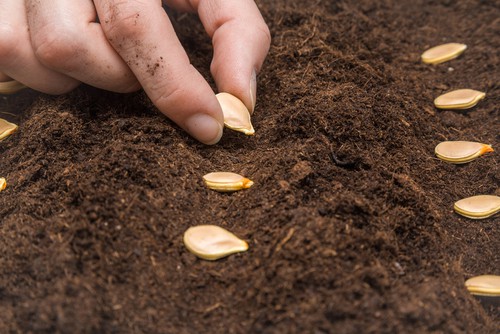
Alternatively, you can sow them outdoors directly. To do this, place 2 or 3 seeds in a hole that is 3cm deep or sow them in shallow rows, either at the end of May or early June but the sooner the better. Cover the holes with plastic and leave this in place for 2 weeks or more, ideally, you want to leave them covered for as long as possible. Soon you will have seedlings and you should leave only the strongest seedlings in place and pinch off the other seedlings.
Growing Pumpkins
Plant in moist well-drained soil in a sheltered position
Pumpkins need a location that is sheltered from cold winds, with moist but well-draining soil and lots of sun. Two weeks before you sow them outside or plant your new seedlings, you should make pockets in the ground where you plan to grow that are 1.8 metres apart. Backfill the area with compost and soil, with some fertiliser on top.
Hardening off young pumpkins grown indoors
At the same time, you should start hardening off younger, indoor-grown plants by moving them outside for a few hours per day, then the entire day, but always bringing them back indoors at night.
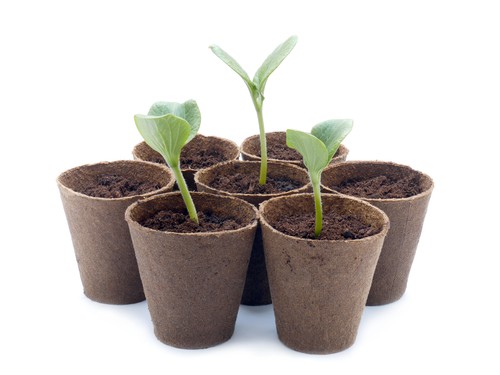
Planting the pumpkin seedlings once they have hardened off
Once the risk of frost has passed, you can plant the pumpkins in the pockets you’ve made around the beginning of June. Pumpkins are very, very thirsty so you will need to water them profusely.
Top Tip: Sink a 15cm pot next to the plants but place them into the soil and add water (when watering) into the pots. This will ensure water moves right into the roots and doesn’t run around the neck of the plant.
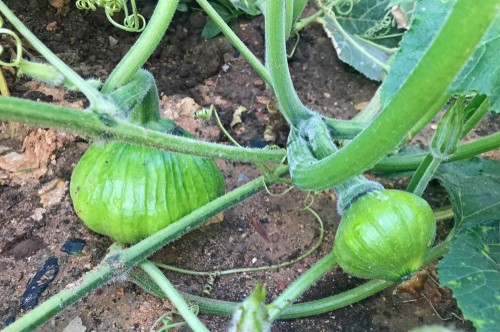
Feeding pumpkins with a high potash feed
Every two weeks you will need to give a liquid high potash fertiliser from the time the fruit begins to swell. This will ensure large, ripe pumpkins bursting with colour and flavour. It is one of the keys to success (along with plenty of water) for those huge punkins you see.
Keeping the pumpkins looking good
Once your pumpkins appear, you can protect the actual fruit by placing a piece of glass or tile underneath so that they are not sitting directly on the soil. You can also try placing them on a bed of straw.
Pests and Problems
Mildew
Be mindful of potential issues like powdery mildew, which is a fairly common problem. If you notice white mildew on the leaf surface, you should grow the pumpkins in a cooler location the following year if possible. However, you can spray with a fungicide that is designed for use on fruit.
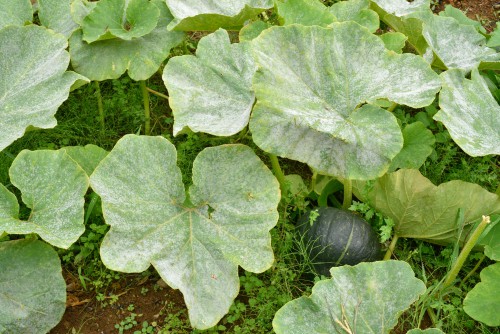
Fruiting problems
If your fruit never manifests, or it does but then it rots quickly, that is caused by weather problems and a lack of pollination. Often the issue will rectify itself once the weather improves, and with it, pollination.
When to harvest pumpkins
Once the outer skin has hardened, you can harvest. This curing of the skin in the sun helps you to store the pumpkin for a longer period of time in a cool place.
Recommended pumpkin varieties
- If you want to make pies, the ‘Atlantic Giant’ is best.
- For small, handheld pumpkins that grandkids will love, ‘Jack Be Little’ is a good variety.
- For pumpkin carving, the classic ‘Becky’ variety is what you want.

